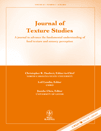
JOURNAL OF TEXTURE STUDIES
Scope & Guideline
Advancing Texture Insights for Food and Pharma
Introduction
Aims and Scopes
- Food Texture Characterization:
The journal emphasizes the analysis and characterization of food textures through various instrumental and sensory methods, including rheological and tribological assessments. - Impact of Processing Techniques:
Research often explores how different food processing techniques affect texture, such as extrusion, thermal processing, and innovative cooking methods. - Consumer Perception and Behavior:
Studies frequently investigate how texture influences consumer preferences and perceptions, especially in relation to specific populations like children and the elderly. - Health and Nutrition:
The journal addresses the nutritional implications of food texture, particularly in developing foods suitable for individuals with swallowing difficulties or dietary restrictions. - Innovative Food Products:
There is a focus on the development of novel food products, including plant-based alternatives, and their textural properties, aiming to enhance consumer acceptability. - Mechanisms of Oral Processing:
Research delves into the mechanisms of oral processing and how food texture affects mastication and swallowing, providing a deeper understanding of food interactions in the mouth.
Trending and Emerging
- Dysphagia Management and Food Design:
Research focusing on developing texture-modified foods for dysphagia management has gained significant traction, highlighting the importance of accessibility and safety in food for vulnerable populations. - Plant-Based Food Textures:
With the rise in popularity of plant-based diets, there is an increasing emphasis on the textural properties of plant-based meat alternatives and how they can mimic traditional meat textures. - Novel Food Processing Technologies:
Emerging studies are exploring innovative food processing technologies, such as 3D printing and ultrasonic processing, to enhance the textural qualities of foods. - Interdisciplinary Approaches to Texture Research:
There is a trend towards interdisciplinary research combining food science, nutrition, psychology, and engineering to better understand the complexities of food texture and its effects on sensory perception. - Consumer-Centric Research:
A notable increase in studies focusing on consumer behavior, preferences, and sensory experiences related to food texture suggests a growing interest in market-driven food innovations.
Declining or Waning
- Traditional Texture Measurement Techniques:
There seems to be a decrease in studies relying solely on traditional texture measurement techniques, as researchers increasingly adopt more sophisticated, multi-dimensional methods. - Focus on Non-Functional Textural Attributes:
Research that does not directly link texture to functional outcomes or consumer preferences is becoming less common, as there is a growing emphasis on practical applications and implications. - Generalized Food Texture Studies:
The journal has seen a decline in generalized studies on food texture that do not target specific populations or health-related issues, indicating a shift towards more specialized research. - Aging Population Studies:
Although still relevant, the frequency of studies solely focused on aging populations and their texture preferences has decreased, possibly due to a broader interest in diverse demographic groups.
Similar Journals

CZECH JOURNAL OF FOOD SCIENCES
Fostering Collaboration in Food Science InnovationCzech Journal of Food Sciences is a premier publication in the field of food science, disseminating vital research since its inception in 1999 and transitioning to Open Access in 2007. Published by the Czech Academy Agricultural Sciences, this journal facilitates the exchange of knowledge among researchers, professionals, and students dedicated to advancing the understanding of food systems, safety, and technology. With an ISSN of 1212-1800 and an E-ISSN of 1805-9317, it holds a respectable position with a Q3 ranking in the Food Science category for 2023, illustrating its commitment to high-quality research despite its Scopus rank of 209 out of 389, situated in the 46th percentile. Located in the heart of the Czech Republic, at TESNOV 17, PRAGUE 117 05, this journal serves as an essential resource for those involved in agricultural and biological sciences, paving the way for innovative discoveries and applications in food science.

Food Hydrocolloids for Health
Connecting Food Science and Health Through ResearchFood Hydrocolloids for Health, published by ELSEVIER, stands at the forefront of research in the fields of food science, gastroenterology, nutrition, and pharmaceutical science. With an ISSN of 2667-0259 and an impressive positioning in the academic community, the journal is ranked Q1 in Food Science and Pharmaceutical Science, alongside Q2 rankings in Gastroenterology and Nutrition and Dietetics as of 2023. This journal serves as a critical platform for disseminating innovative findings related to the health benefits of food hydrocolloids, emphasizing their applications and efficacy in nutrition and medicine. Researchers, professionals, and students can access cutting-edge studies that promote the understanding of health outcomes derived from hydrocolloid-based foods. The journal’s international outreach from the Netherlands facilitates a diverse array of contributions, making it essential for those engaged in advancing knowledge within these dynamic disciplines.

Food Engineering Reviews
Advancing Food Engineering Knowledge for a Sustainable Future.Food Engineering Reviews is a prestigious journal published by SPRINGER, dedicated to advancing the field of food engineering through comprehensive review articles that synthesize current research and innovative practices. With an ISSN of 1866-7910 and an E-ISSN of 1866-7929, this journal serves as a vital resource for researchers, professionals, and students interested in the intricacies of food processing, preservation, and engineering techniques. Notably, the journal holds an impressive Q1 ranking in the category of Industrial and Manufacturing Engineering as of 2023, and it is positioned in the 94th percentile within its field according to Scopus rankings, highlighting its significance within the academic community. Although it does not offer open access, the rigorous content published in the journal from its inception in 2009 through to 2024 plays a crucial role in shaping practices that promote efficiency and sustainability in food engineering. The journal aims to foster knowledge exchange among scholars and industry experts, ensuring that emerging trends and foundational research are accessible to those striving towards excellence in food technology.

JOURNAL OF THE JAPANESE SOCIETY FOR FOOD SCIENCE AND TECHNOLOGY-NIPPON SHOKUHIN KAGAKU KOGAKU KAISHI
Advancing Food Science for a Sustainable FutureWelcome to the JOURNAL OF THE JAPANESE SOCIETY FOR FOOD SCIENCE AND TECHNOLOGY-NIPPON SHOKUHIN KAGAKU KOGAKU KAISHI, a pivotal platform for the advancement of food science and technology. Published by the Japan Society for Food Science and Technology, this esteemed journal has been contributing to the field since 1995 and continues to publish innovative research and reviews that foster knowledge and collaboration among researchers, professionals, and students interested in food science. Although it currently holds a Q4 ranking within the Food Science category, the journal's commitment to disseminating valuable insights showcases its potential as a resource for emerging trends and applications in food technology. While it does not offer open access options, it maintains a rigorous peer-review process to ensure the quality of its content. As this journal progresses into its convergence years through 2024, it remains an essential resource for those passionate about exploring the intersections of food science and technology in Japan and beyond.
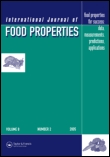
INTERNATIONAL JOURNAL OF FOOD PROPERTIES
Bridging theory and application in food properties.INTERNATIONAL JOURNAL OF FOOD PROPERTIES, published by TAYLOR & FRANCIS INC, is a leading platform for disseminating high-quality research in the field of food science. With an ISSN of 1094-2912 and E-ISSN of 1532-2386, this journal has been committed to open access since 2018, ensuring that groundbreaking studies are readily available to global audiences. The journal has steadily gained recognition for its contribution to the discipline, achieving a Q2 ranking in Food Science and placing in the 68th percentile among its peers according to Scopus metrics. Covering a wide array of topics related to the properties and applications of food, it serves as a valuable resource for researchers, professionals, and students alike. With coverage extending from 1998 to 2024, the journal continually seeks to advance knowledge and foster innovation within the food science community, making it a pivotal publication for anyone serious about this vital field.
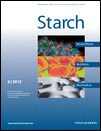
STARCH-STARKE
Exploring the Complexities of Starch ScienceSTARCH-STARKE is a prestigious journal published by WILEY-V C H VERLAG GMBH, focusing on the intricate fields of Food Science and Organic Chemistry. Established in 1949, this journal has carved a niche for itself as an essential resource for researchers and professionals seeking to explore the complexities of starch and its derivatives. With an impressive Scopus ranking—#139 in Food Science and #97 in Organic Chemistry—STARCH-STARKE holds a Q2 category position in both fields as of 2023, showcasing its significant impact and contribution to academic discourse. Although it does not offer open access options, the journal’s rigorous peer-review process ensures that the published content maintains the highest quality standards, making it an invaluable reference for students and seasoned researchers alike. With coverage spanning from 1949 to the present, STARCH-STARKE remains at the forefront of innovation in starch research, addressing both theoretical and practical applications.
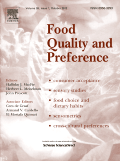
Food Quality and Preference
Elevating Standards in Food Science and Sensory AnalysisFood Quality and Preference is a leading journal in the fields of food science and nutrition, published by ELSEVIER SCI LTD. With a notable impact factor and ranking in the Q1 quartile for both food science and nutrition and dietetics in 2023, this journal consistently publishes high-quality research that explores the multifaceted aspects of food preferences, sensory evaluation, and consumer behavior. The journal provides a critical platform for researchers, professionals, and students engaged in the study of food quality, aiming to enhance our understanding of how sensory properties, nutritional value, and consumer choices intersect. Its commitment to disseminating cutting-edge findings makes it an essential resource for advancing the field and informing practice in both academic and industry settings. Access to the journal is via subscription, allowing for robust engagement with pioneering research that shapes current and future practices in food-related studies.
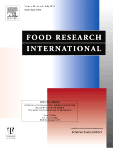
FOOD RESEARCH INTERNATIONAL
Fostering Collaboration for Food InnovationFOOD RESEARCH INTERNATIONAL is a premier academic journal published by ELSEVIER, specializing in the field of Food Science. With an impressive impact factor and ranked Q1 in the 2023 category quartiles, it stands at the forefront of research, positioned 17th out of 389 in the Scopus ranking for Agricultural and Biological Sciences, attaining a commendable 95th percentile. The journal publishes high-quality, peer-reviewed articles that cover a broad spectrum of topics, including food safety, quality control, nutrition, and biotechnology, making it an invaluable resource for academics, industry professionals, and students alike. As FOOD RESEARCH INTERNATIONAL seeks to enhance understanding and advance technologies related to food, it encourages innovative perspectives and interdisciplinary research. The journal, active from 1992 and continuing through 2024, is an essential platform for disseminating vital findings and fostering collaboration within the global food science community.
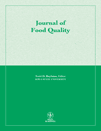
JOURNAL OF FOOD QUALITY
Advancing Knowledge in Food Safety and Quality AssuranceThe Journal of Food Quality, an esteemed publication under Wiley-Hindawi, stands as a vital resource in the dynamic field of Food Science, established since 1977 and operating under an Open Access model since 2017. With its seat in the United Kingdom, this journal focuses on delivering high-quality research and insights pertaining to food safety, risk management, and quality assurance, reflected in its impressive Q2 ranking in both Food Science and Safety, Risk, Reliability and Quality categories in 2023. Researchers and professionals will find the journal’s contributions indispensable, particularly given its Scopus rankings that place it in the top echelons of its fields, highlighting its impact and relevance. By fostering an environment of knowledge sharing, the Journal of Food Quality not only enhances academic dialogue but also supports innovation and best practices in food research and industry applications.
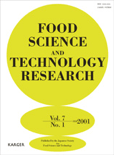
FOOD SCIENCE AND TECHNOLOGY RESEARCH
Elevating Standards in Food Safety and QualityFOOD SCIENCE AND TECHNOLOGY RESEARCH, published by the Japanese Society of Food Science & Technology, is a pivotal journal that encompasses a wide spectrum of research in the fields of food science, biotechnology, and engineering. With its ISSN number 1344-6606 and a digital counterpart E-ISSN 1881-3984, this journal aims to disseminate cutting-edge research and innovative technologies that enhance food safety, quality, and sustainability. Recognized for its contributions, it holds a Q3 category ranking in multiple disciplines, including Food Science and Biotechnology, indicating a significant role in advancing academic discourse. Researchers and professionals can benefit from its insights, as the journal covers an array of topics relevant to industrial applications, marketing strategies, and scientific advancements. Although not an open-access journal, it has a wide reach and is committed to providing high-quality, peer-reviewed content essential for scholars and practitioners in the food science community from 1999 to 2024.